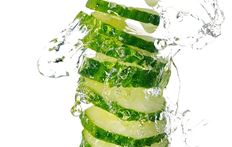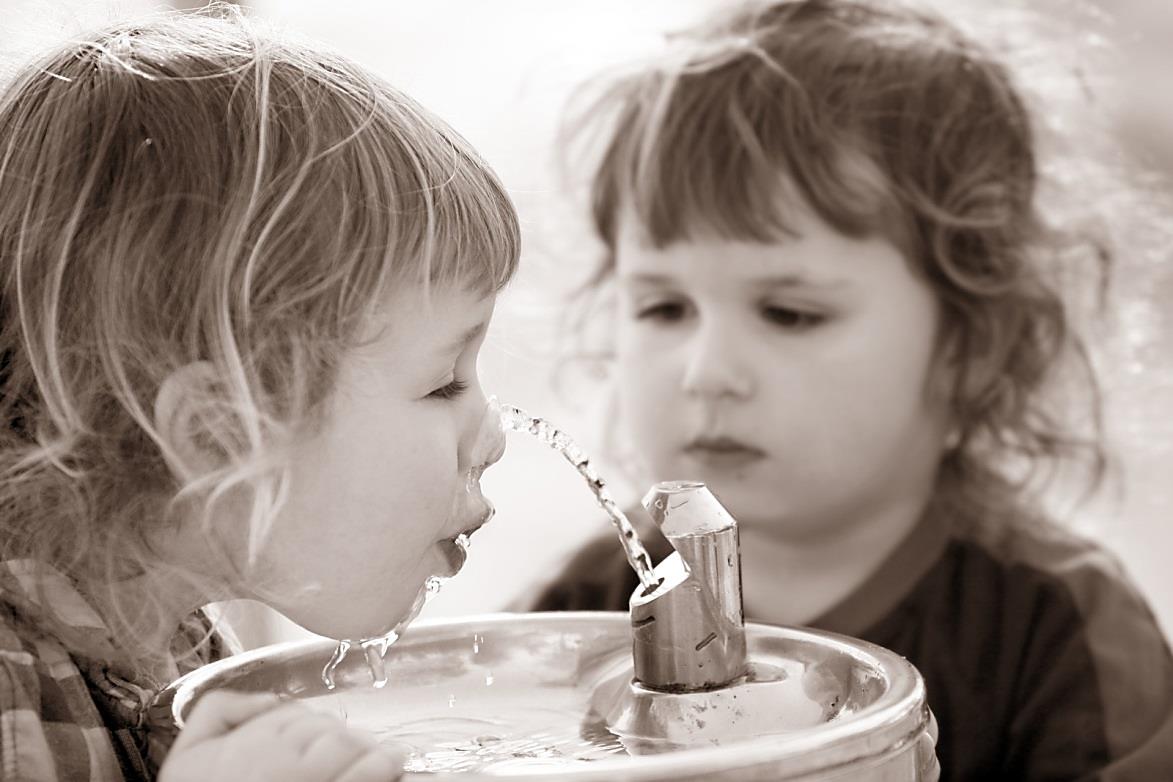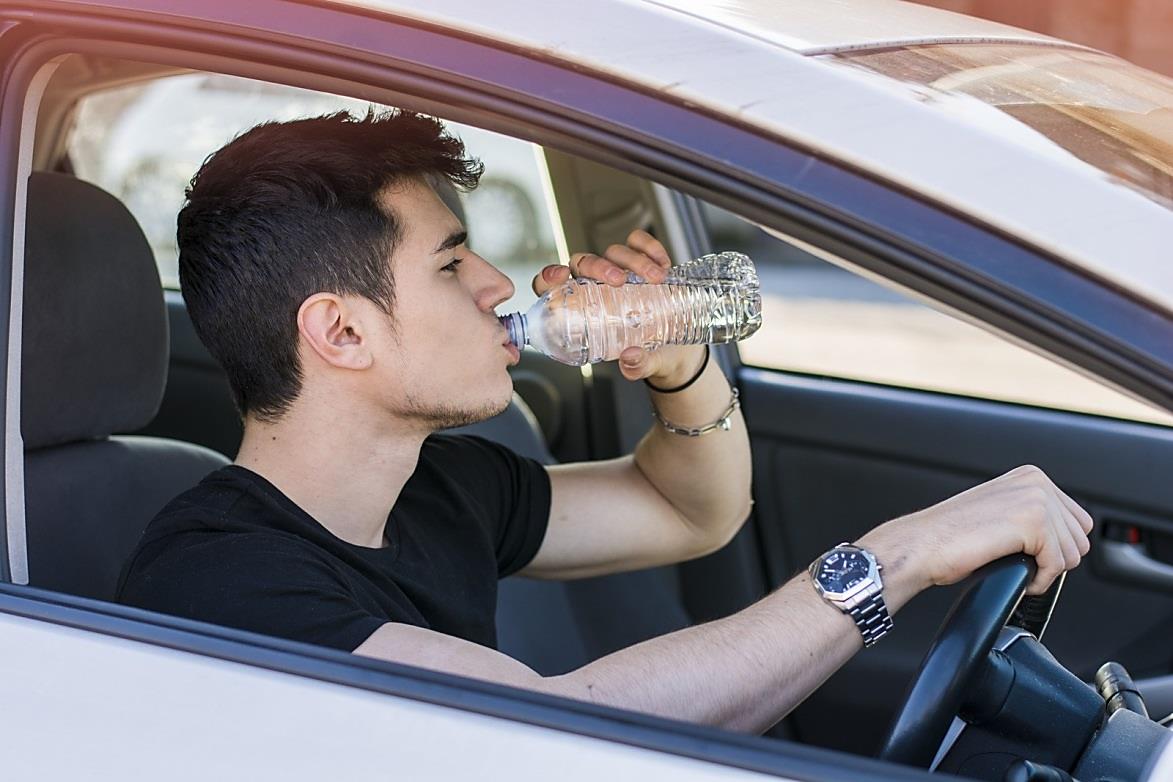
The Talking Water Bottle
We should all know the direct correlation between drinking sufficient water and keeping healthy by now (OK, well I should, I’ve researched and written about it often enough – maybe you shouldn’t), but quite surprisingly in spite of a plethora of information from just about everywhere, it seems we still need to be told about this pretty basic principle.
- To be fair (all about fairness, me) in this tech age, I may just be more easily convinced if I had some clever water bottle that glowed at me until I drank from it or;
- What about a water bottle that apparently dings at you when it’s time to drink up!
- Then, getting even more tech spec-ee, what about all these apps that alert you to the fact that you haven’t had your daily water as yet. Yep, there really are a variety of ‘drink water’ apps available for smart phones and for those that like to add cucumber or similar to their water, there is a water bottle / spiral slicer (yep, really) that slices your cucumber directly into your bottles water.
These inventions and concepts (as some are still at the conceptual stage) are quite amazing, clever and resourceful.
For me though, not having a smart phone (oh woe is me) and I’m guessing I’m one of many millions that also don’t have a smart phone, I still believe that it’s kind of up to the individual (unless you have a forward thinking team at work who realise that hydrated employees are happier, healthier and make for a more productive team) to ensure that you drink your water.
What’s even more amazing is that if you choose your drinking water from AquAid, a portion of the proceeds of your water cooler purchase is automatically donated to water projects around the globe – these being to Christian Aid and The Africa Trust.
Now, that’s pretty amazing!

Too Cool for School – the Water Cooler that Could
Schools are back and summer is on the way. It’s always a concern that your child is getting enough water to drink during their busy school day. Fortunately, school water coolers are pretty much de rigeur in schools across the length and breadth of the U.K.
But what can you do, as parents, to help reinforce your children’s healthy hydration habits when they’re not with you during the day?
The amount of fluid a child needs depends on many factors including age, gender, weather and how much physical activity they get but generally children should aim to have six to eight drinks per day which should ideally be water (on top of the water provided by food in the diet).
Younger children need relatively small servings (e.g. 150ml per drink) and older children need larger servings (e.g. 250-300ml per drink).
Children should be encouraged to sip fluids at regular intervals throughout the day – a lot of children drink fluids at the end of the day when feelings of dehydration have already started to set in.
A few suggestions:
- Start good hydration habits at home by setting an example for your children. Make sure you drink enough water and you’ll soon get them into the habit – young children love to emulate what mom or dad is doing! Plus, of course, you’ll be doing not just your kids but yourself a favour too!
- Do a tour of the school yourself whenever your children start at a new school and make sure that there are sufficient water cooler stations with easy access for the children.
- Simple measures, like the addition of a bottle of water to the school lunchbox or backpack can always help to reinforce your children to keep hydrated. If straws are approved by the school and are appropriate for your child’s age, include a bendy straw, it will, without doubt, add interest to drinking the bottle’s contents, even if it is water!
- You don’t have to stick with just water, but be aware of the calorie count in other drinks such as fruit juices and soft drinks (in fact, perhaps try to stay away from soft drinks, or in fact, anything with fizz in it). Perhaps look at weak squash or diluted fruit juices.

Hot Water? Cold Water? What’s your opinion?
I’ll admit I’m the world’s biggest wuss when it comes to bathing or showering in cold water. Even when there are scorching hot temperatures, I’ll still opt for a mildly warm shower instead of ice cold. I may slowly turn the hot water tap down during shower but even then, I’d rather not switch off the hot tap entirely.
To be fair, if you live in a region with longer winters and icy cold weather for more months of the year than warm weather, it makes sense to keep that hot tap open, so you’d need to take that into consideration, but when all is said and done, are hot or cold showers better for you and why?
I splish-splashed across the web to find out.
In favour of heat:
- Hot showers can relieve tension and soothe stiff muscles. If you have a powerful showerhead, even better! You can let the hot water work like a mini massage on your shoulders, neck, and back.
- Studies have shown that taking a hot shower can amp up your oxytocin levels and ease anxiety. Anyone working with stress can use more of the love hormone in their life.
- A hot shower also acts as a natural decongestant to relieve cold symptoms, since the hot steam moisturises nasal passages.
- Under the weather and running a slight fever? A hot shower might be what you need to help break your fever and bring your temperature back to normal.
In favour of the cooler option:
- Cold showers – as unbearable as they are – are actually really good for our bodies. Turning your shower cold for the last five minutes can help ‘shock’ your body awake. This instant change in temperature relieves your body of fatigue and increases your mental alertness.
- A ’cooler’ shower (around 20 °C) for two to three minutes once or twice daily is recommended by researchers as a treatment for depression. Just make sure you check in with your doctor before testing this out.
- On the more vain side of the spectrum, cold showers are better for our hair and skin. Where a hot shower can dry things out, cold showers hydrate and help with split ends and dry skin. I also have it on good authority that rinsing your shampoo out with cooler water places less stress on your hair, leaving your hair in a more sleek condition. All of those beautiful sleek looking seals can’t be wrong.
Whichever works for you, a cautionary note – no, I wouldn’t suggest that you filch the company water cooler or boiler to test out the hot or cold shower theory. That water’s for drinking, dear, not bathing.

Driver Hydration and Other Hydration Type Scenarios
As I’m typing this, I’m literally looking (through?) a glass of water waiting for inspiration to strike.
Rather funny, that, considering what the topic of this blog’s about. Have you guessed yet?
*eyes slide back to the glass of water*
*ponder* *ruminate*
*again, eyes go back to the glass of water*
Did you guess? Did you? Did you? Perhaps the title gave it away?
I like the fact that some ways down the line speaking about the benefits of drinking water (and believe you me, when you drink water from one of our water products, the benefits are manifold), I continue to learn something new. Isn’t that marvellous? I happen to think it is!
As an example, whereas I’ve covered the length and breadth and depth of hydration; hydration vs. dehydration; how much water to drink; when to drink it; where to drink it; hydration for children; hydration for adult type people; hydration for our elders; etcetera, etcetera. and aside from a mention involving a possible karmic slight accident when driving, I’ve never really been aware or made mention about how vitally important it is that a person driving a car, lorry, any road use vehicle, needs to be sufficiently hydrated in order to operate a vehicle safely.
A driver being hydrated is a thing? Surely not!
Yes, absolutely, driver hydration is a thing. It’s such a thing that there have been definitive studies conducted that establish how vitally important it is for road users to ensure that they keep hydrated while driving.
Why is this?
- Well, as an example, results from these studies have shown that dehydration can occur as easily as having a 1% drop in ydration levels.
- It’s also been proven that a dehydrated driver’s abilities can be as impaired as that of a drunk driver, which in itself is pretty frightening.
- Moreover, the research found that mildly dehydrated drivers are almost twice as likely to make errors on the road when compared with well-hydrated drivers, with dehydrated drivers being more likely to both swerve between lanes and brake late, two of the key causes of vehicle accidents.
As always when I’m learning something, I find information like this fascinating. I’m now more aware of my responsibilities when driving and hopefully, after having read this, now you know too. So, drink up and make sure that your next road trip is a happy and hydrated one, keeping yourself and other road users safe on our roads.
